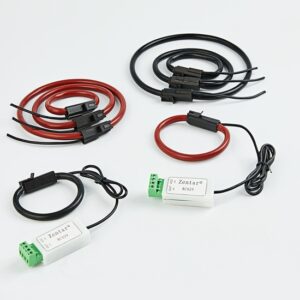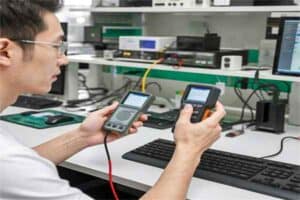Abstract: New electronic transformers have been developed and applied in our country for more than ten years, and more than 300 power stations have been tested or officially operated.
Keywords: electronic transformer, sensor, collector
New electronic transformers have been developed and applied in our country for more than ten years, and more than 300 power stations have been tested or officially operated. The number of domestic units engaged in the research and development of electronic transformer technology has increased to more than 30, and some or all series of manufacturers have been close to 10. At present, in addition to the need to continue to overcome some of the newly emerging technical obstacles at the application level, the unification of various interface standards has become a top priority for electronic transformers.
●The significance of interface standardization
As a new type of industrial electrical appliances, electronic transformers have versatility, interchangeability, assemblability, and maintainability as necessary conditions for popularization and application. After the product has gone through the two important stages of principle R&D and applicability verification, in order to meet the needs of industrialized mass production, standardized engineering selection and design, and unified testing methods, it should leave the state of test products as soon as possible and transition to a fixed solution. Standardized products with universal interfaces. Standardization will greatly reduce manufacturing and service costs, and is more conducive to product maturity.
With standardized interfaces, each component of the transformer becomes a module that can be flexibly assembled, plugged in, and disassembled, and has on-site interchangeability and maintainability. If the interface standard adheres to the private agreement, and in use, the components become a fixed collocation, and there is no interchangeability and universality. The failure of a single device in some power stations often requires the “whole system” to be removed and returned to the factory for repair. This fact just illustrates the necessity and urgency of interface standardization. If there are standardized interfaces between the components, not only the transformer components of the same manufacturer can be flexibly replaced or replaced, but the transformers of different manufacturers can also be compatible and interchangeable. This not only brings convenience to manufacturers, but also brings flexibility to engineering design and user selection.
●Status of non-standardization
At present, the manufacture of electronic transformers is mainly based on the two international standards of “IEC60044-8” electronic current transformers and “IEC61850-9” digital power station communication system. These two standards only specify the network output interface of the combiner. , But there is no clear regulation on the digital output interface and sensor interface between the collector and combiner of the transformer. This is the root cause of the non-standardized development of current products.
The network interface of the combiner: Due to the differences in the above-mentioned two international standards, the three protocols “FT3”, “9-1” and “9-2” are implemented at the same time in the power stations in our country. Three protocols are also executed on the combiner at the same time to adapt to the docking requirements of different manufacturers. The reason for this situation is that on the one hand, the actual differences in equipment of different manufacturers, and the other factor is the design unit’s solution in the power station protection mode— -Strive to have both and all. This will increase the difficulty of debugging and runtime.
The digital output interface of the collector: refers to the digital output interface from the collector to the combiner. There is no clear standard so far, and all manufacturers adopt private agreements. Take Xi’an Huawei Optoelectronics Co., Ltd. as an example. The current collectors are forced to use six interface protocols to adapt to the docking requirements of different secondary manufacturers. This brings a lot of trouble to product technical management, pre-sales and after-sales service. A power station uses multiple transformers, often due to differences in interface standards, resulting in compatibility failures. Once a problem occurs, it is difficult to quickly locate due to the conversion between standards. Some manufacturers move the calibration function of the sensor to the combiner, making the combiner and transformer the only fixed collocation, losing the versatility and interchangeability of components, and bringing difficulties to subsequent maintenance services and version upgrades.
Proprietary protocols are incomplete: as a collector output interface standard, the existing private protocols lack strict technical demonstrations. Although they are incompatible with each other, they can be roughly divided into two categories from the source: one is to apply the “FT3” framework, and the other The class is to apply asynchronous RS-232 framework. Because the “frame” is borrowed, the original frame is filled and some invalid bits are introduced. Because the invalid bits still need to participate in the CRC check, the communication process not only consumes communication resources, but also increases the probability of error. No matter which framework is adopted, there is no sufficient demonstration of reliability, effectiveness, simplicity, and fault tolerance. In fact, choosing a good standard is essential to increase communication reliability. At present, a large number of asynchronous interpolation methods are used instead of synchronous methods. , The reason is that the asynchronous method eliminates the synchronous response process, which can reduce the probability of error by half.
Business short-sighted factors: Although companies are calling for the establishment of a unified interface standard, but in the need of commercial competition, some manufacturers that enter the market hope to retain their own technology as a threshold to prevent latecomers from participating and entering. From a long-term perspective, a unified competition platform is more conducive to the overall development of the industry.
Misunderstanding of one-sided advancement: Another factor that resists the standardization process is the one-sided pursuit of the so-called advancement and arbitrarily increasing design indicators to show its difference. For example, some power stations increase the digital sampling rate to 200-500 points/cycle, mistakenly thinking that high sampling rate means high accuracy. In fact, the protection algorithm only needs 16-24 points/cycle. The measurement algorithm is a time accumulation of statistical averages. The 48-80 points/cycle specified by the standard is already very high sampling accuracy. Too high sampling rate will increase unnecessary communication burden, cause communication failure and affect measurement accuracy.
●Recommendations to realize interface standardization
The formulation of a unified interface standard for electronic transformers is an important link that must be experienced to promote the technological progress of the entire industry. The formulation of standards itself is also a part of the intellectual property rights of transformers. Since my country is already at the forefront of the world in the field of R&D and application of electronic transformers, we cannot wait for the formulation of international standards and then follow up. We need to improve the relevant standards by ourselves.
◆It is recommended to use the National Instrument Transformer Standards Committee or the industry association as the organizer to summarize the practical activities of the past ten years, organize relevant personnel, fully demonstrate, and formulate the digital output interface standards of electronic transformers suitable for the actual operation requirements of our power stations.
◆In view of the differences in the sensing principles of various transformers, sensor output standards are not currently specified. A unified standard can be formulated for the digital output interface from the collector to the combiner with common requirements.
◆The new standard can be used as a recommended standard at first. It is recommended that manufacturers try it out. After one year, it will be revised through summary and publicized as a formal standard. Correspondingly, testing and inspection standards should also be based on the new interface standard, and private agreements should be abolished.




